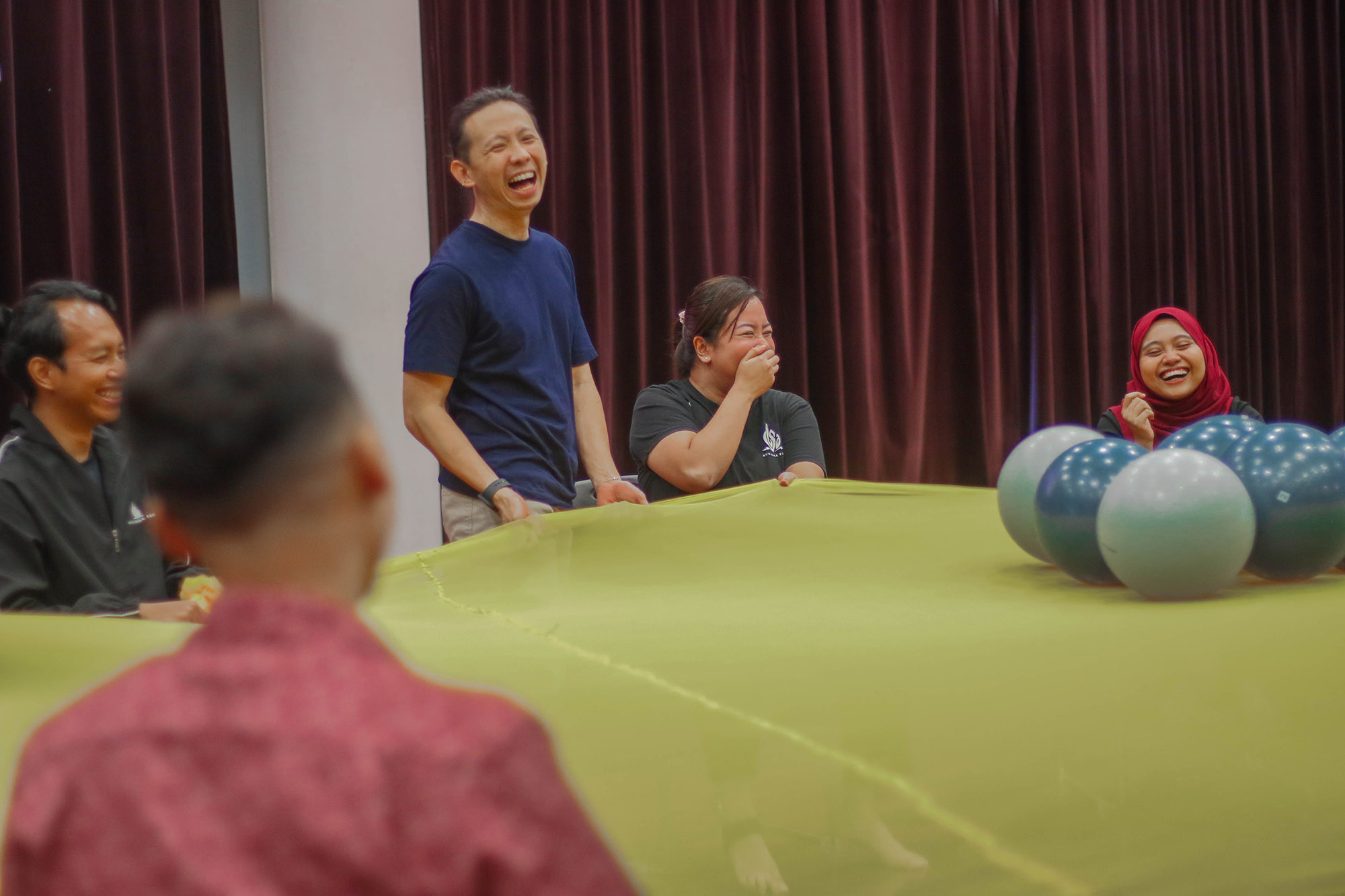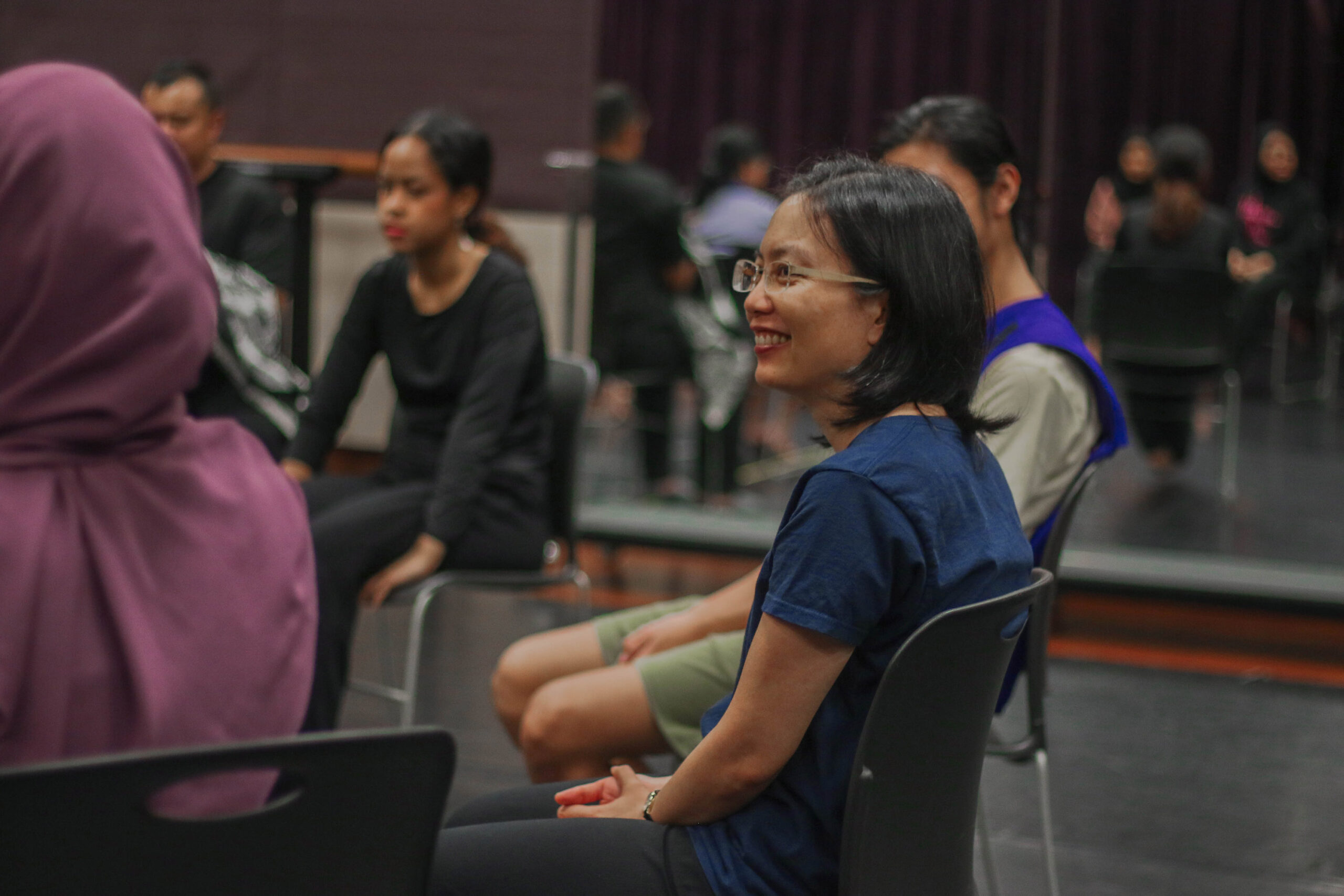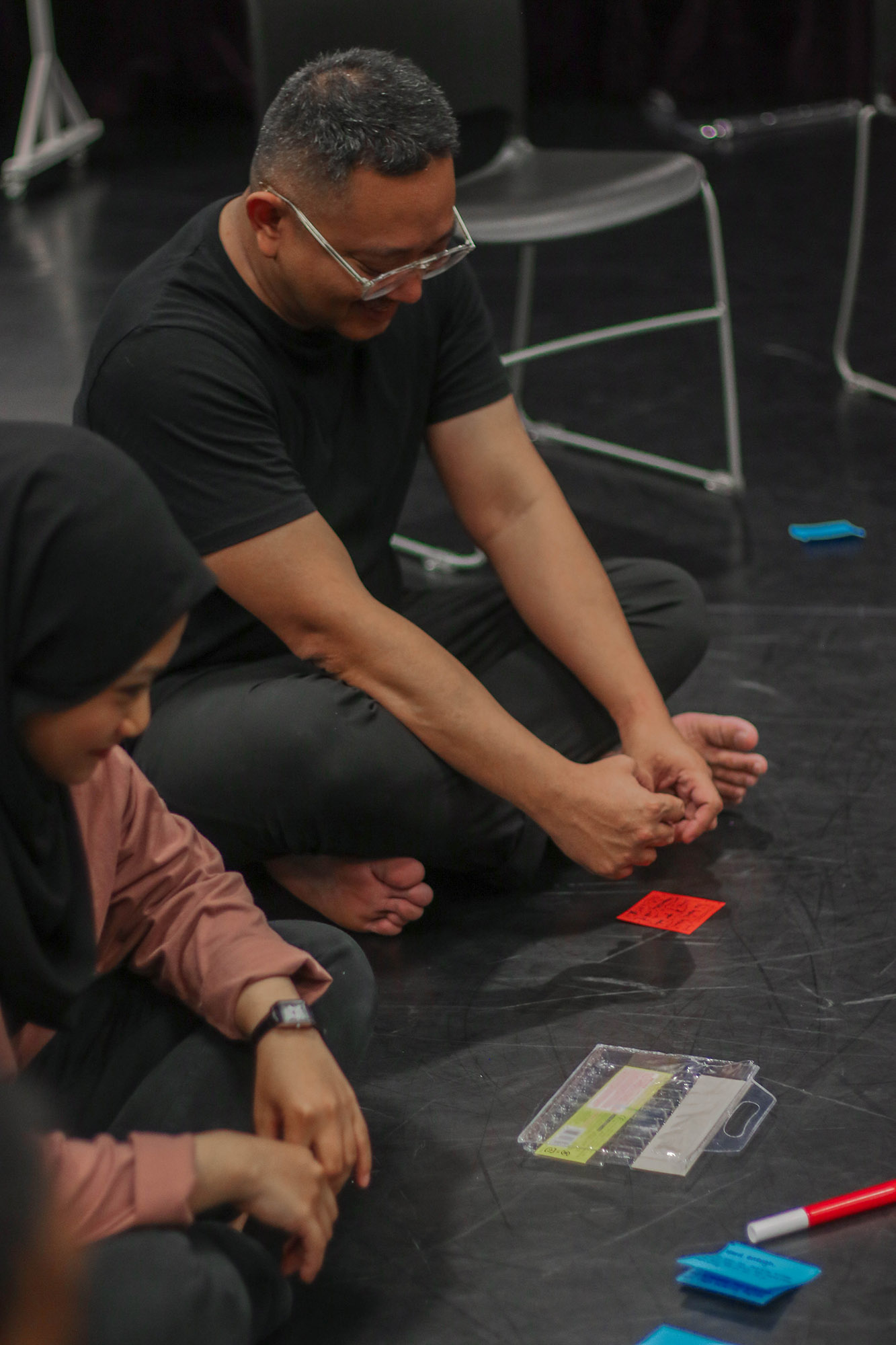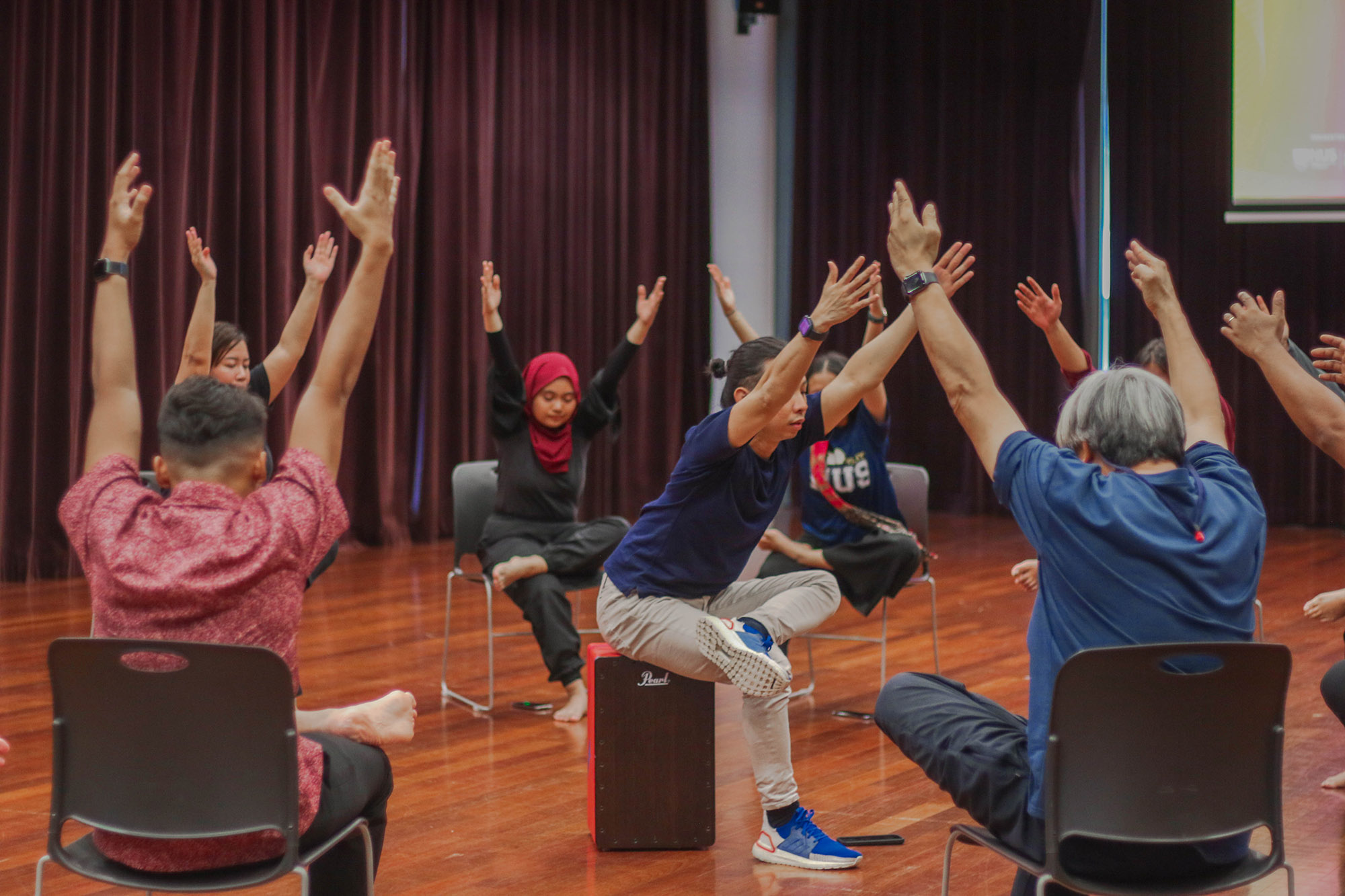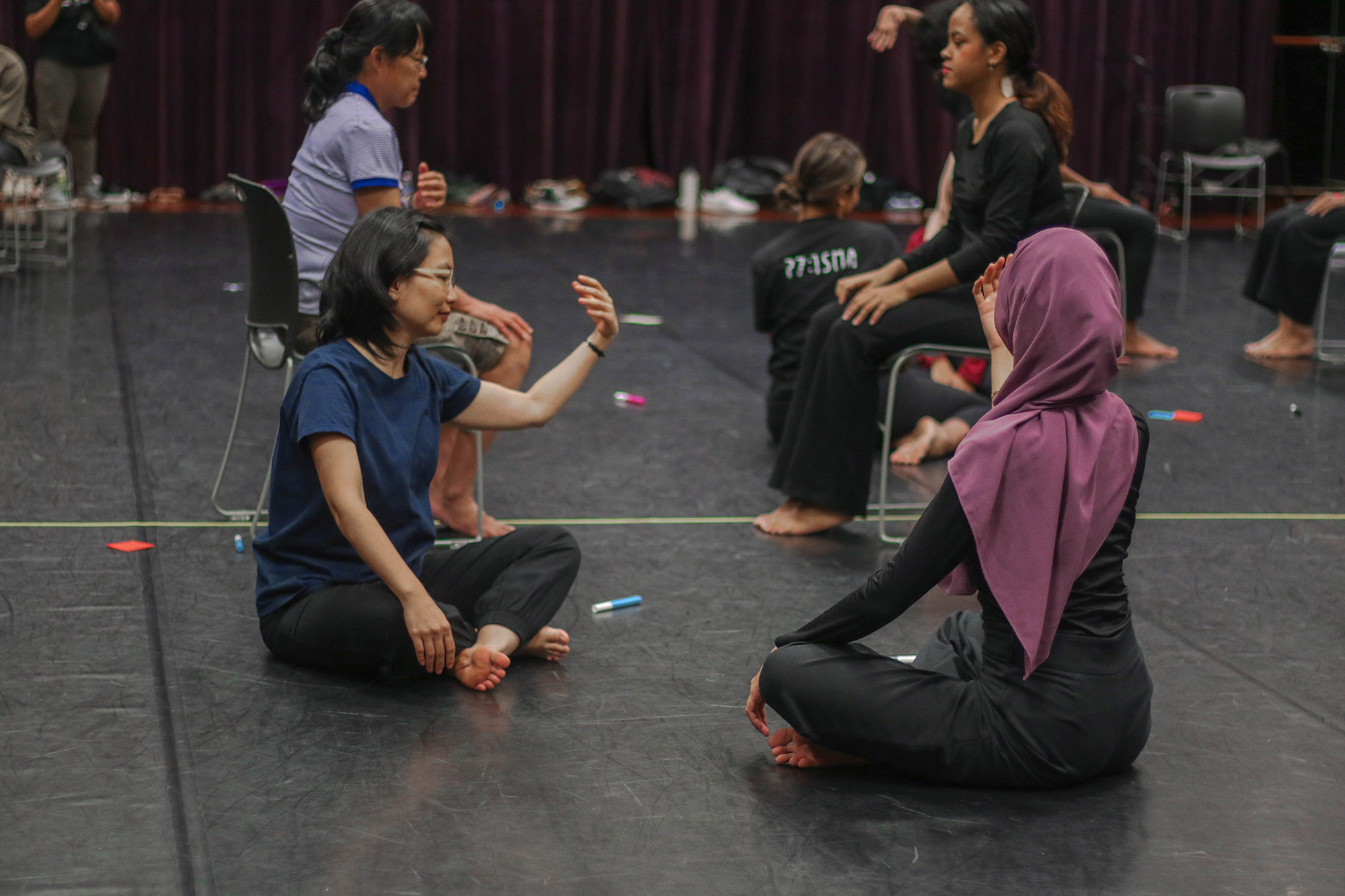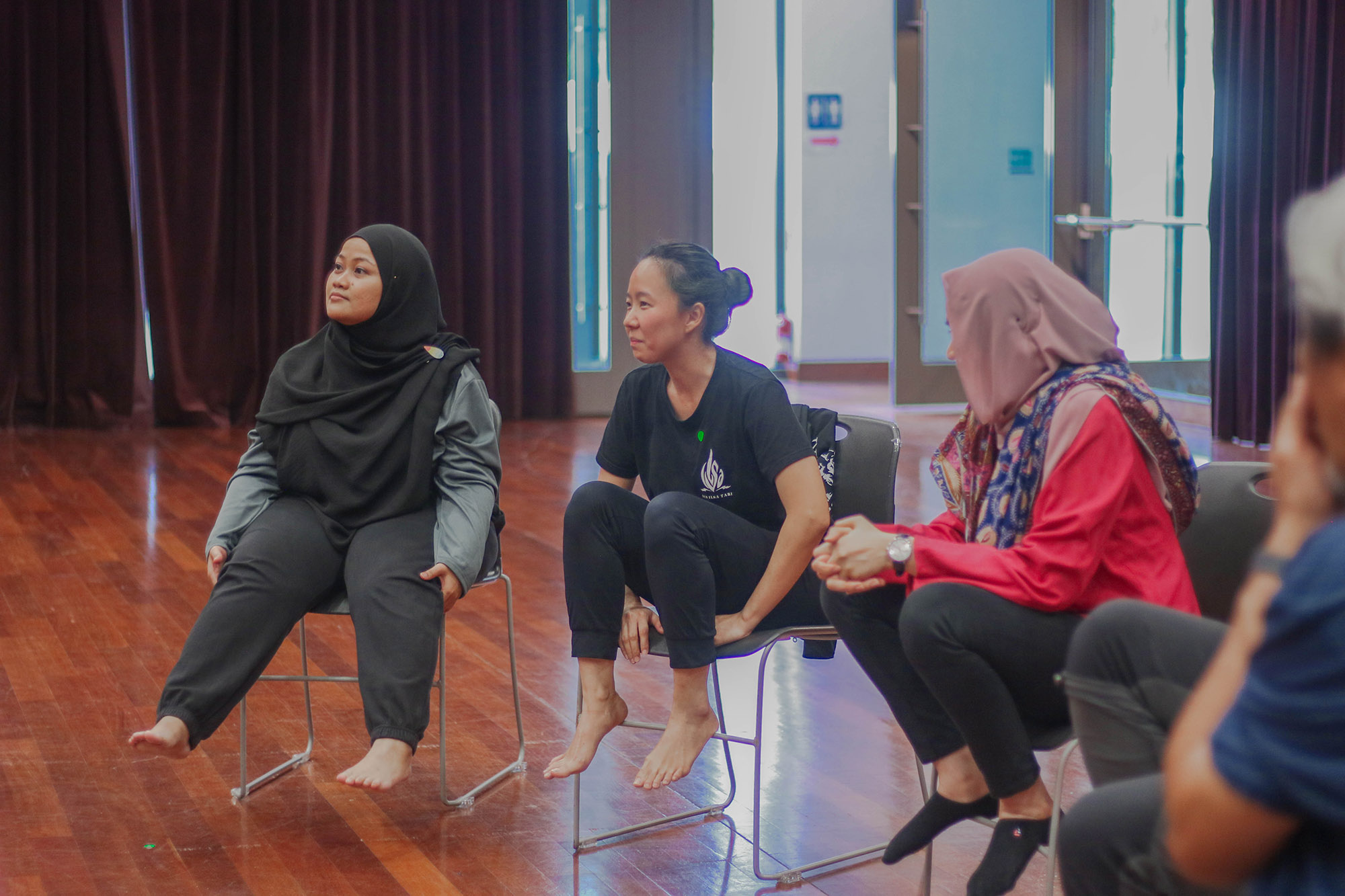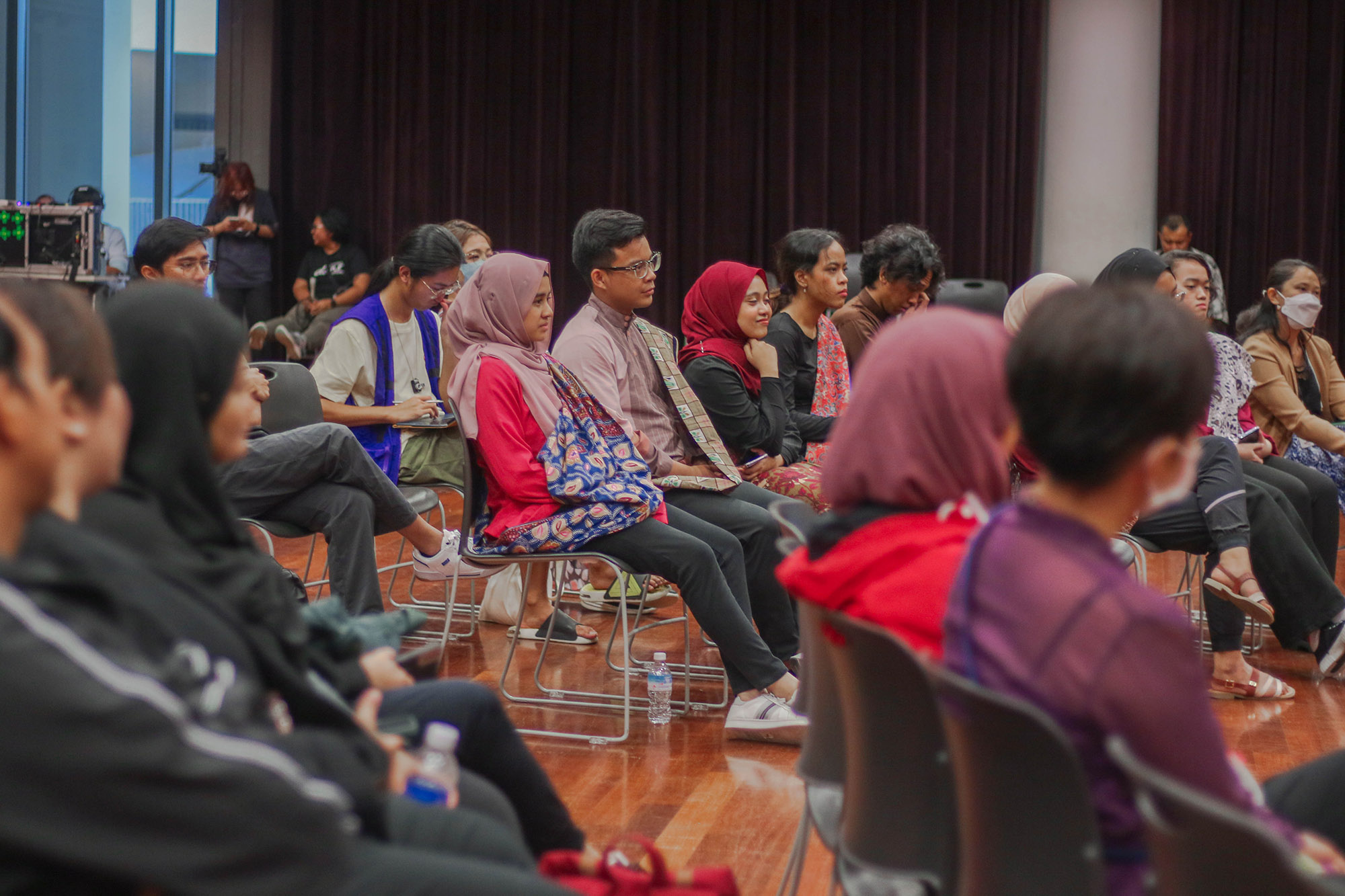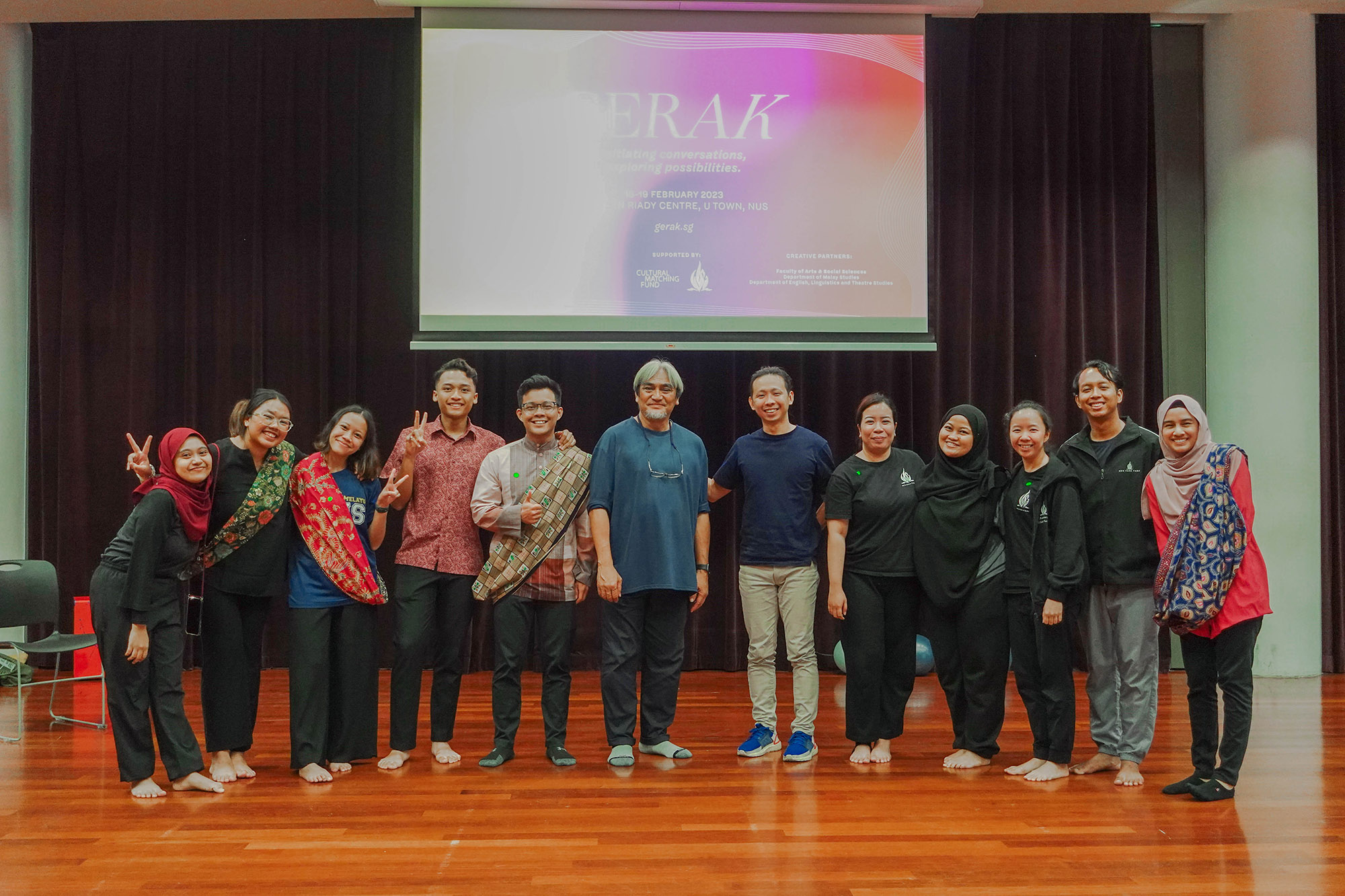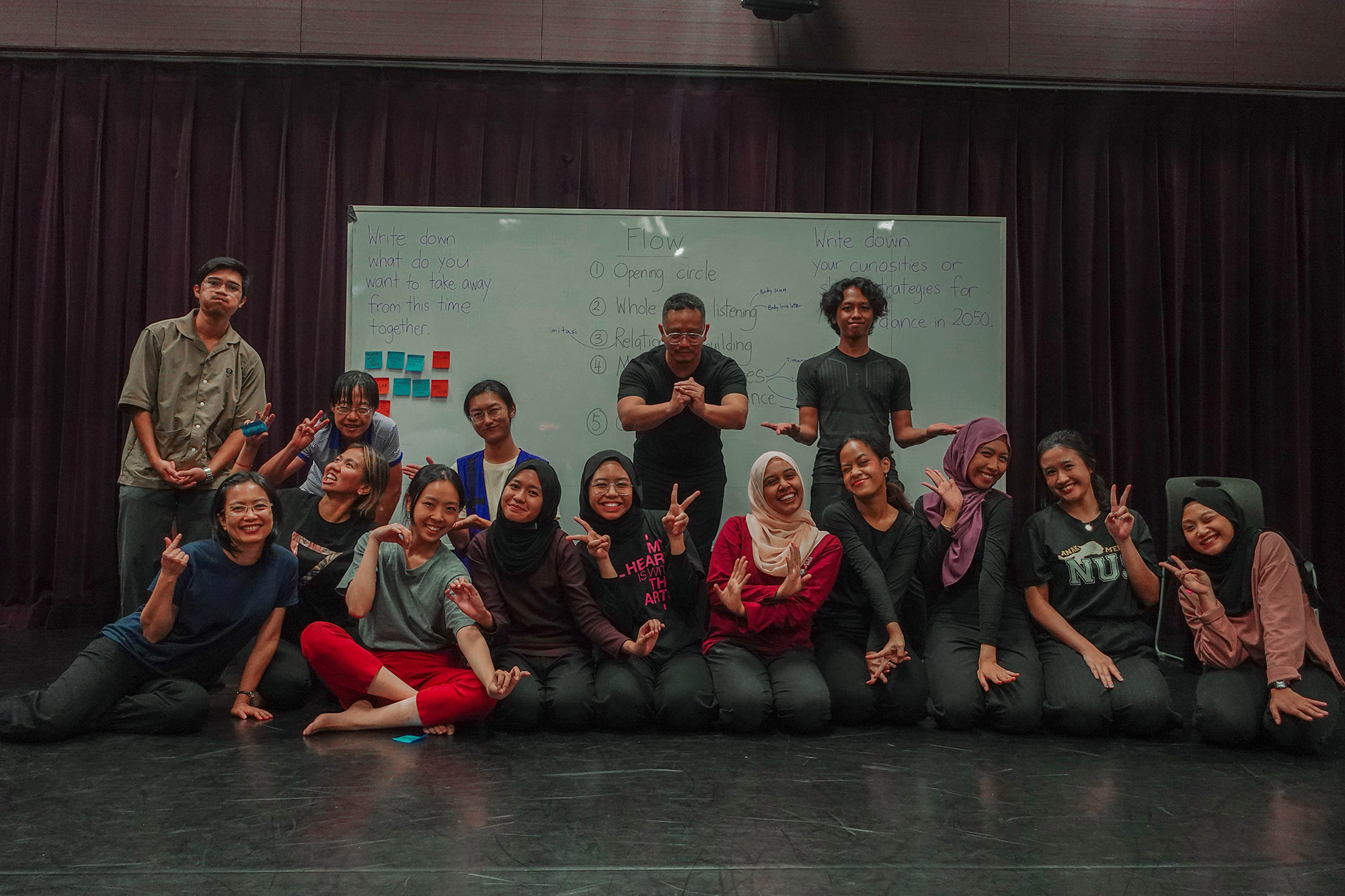Let’s Get Moving – Therapeutic Potential of Malay Dance
By Rossy Sri Julyana Bte Jumahat (2023)
Adopting Malay dance vocabularies into physical therapy, and exploring various collaborative approaches as they unfold through two movement strategies workshops.
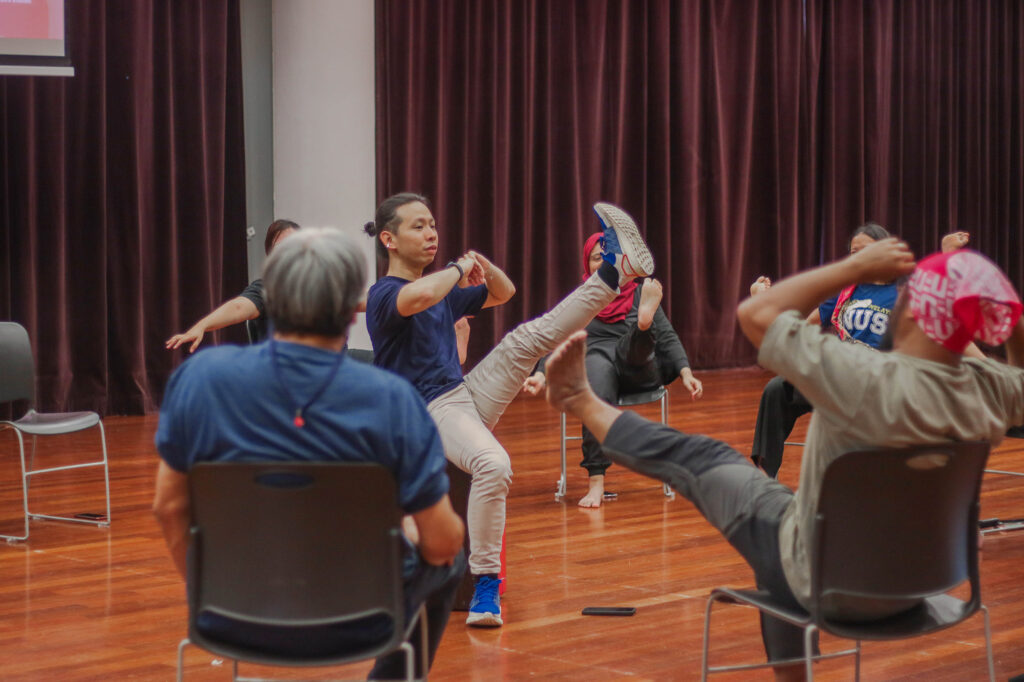
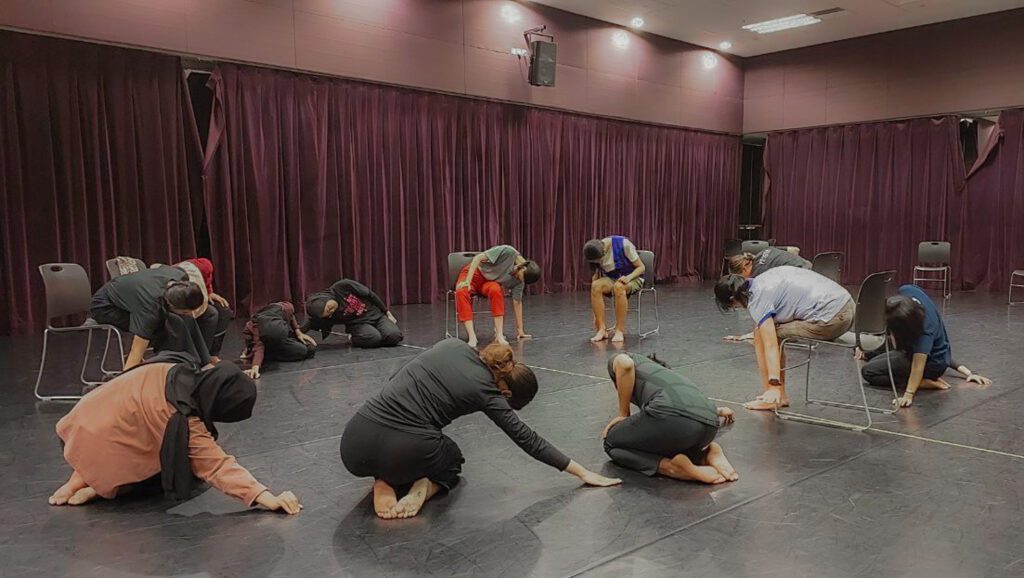
The second afternoon of the symposium was a time when attendees could have a taste of the therapeutic potential of Malay dance through the symposium’s movement strategy workshops. Weeks prior to the workshops, the practitioners involved had met several times to create a short programme flow that not only utilises Malay dance techniques, but also therapeutic elements that enable participants to engage with their emotions.
Given their experience working with seniors on therapeutic movements, Mr Edwin Wee from Decadance Co, was paired up with Mr Osman Abdul Hamid (who facilitated the Wisma Geylang Serai Project) to formulate a workshop that simulated a therapy session with the seniors and aimed to uplift their moods. Meanwhile, Assoc. Prof. Liang Peilin, whose research focuses on Probody Art Making, and Ms Hasyimah Harith from P7:1SMA Ltd collaborated with an introspective approach to dance – while paying attention to the movements executed, they also look into discovering and channelling emotions within dancers and exploring ways for dance to care for the dancers. Before the workshop, Mr Edwin and Ms Hasyimah shared more about the Decasilver programme and the Kembali project (respectively) in the roundtable discussion.
Movement Strategy Workshop #1
by Mr Osman Abdul Hamid (Era Dance Theatre Ltd) & Mr Edwin Wee (Decadance Co)
Close to 10 dancer-participants were seated on chairs in a circle to experience what it was like to be seniors participating in a group therapy session. Mr. Edwin took the 10 participants through a session similar to the ones he generally conducts with his elderly participants under Decasilver.
Mr Edwin started with warm up and stretching that trains the participants’ mobility, before he led them through a set of coordination and focus activities. To promote fast reflex and make participants open up to one another, Mr Edwin had them pass several balls around (either to the left or the right) while he threw a different coloured ball to disrupt the flow. He then organised a net game whereby participants had to ensure at least one ball remained on the net while he attempted to push them off-course throughout the song. Throughout the activities, Mr Edwin maintained high levels of energy and used upbeat songs to ensure that the participants were kept energised and active in trying to coordinate with the movements of the balls.
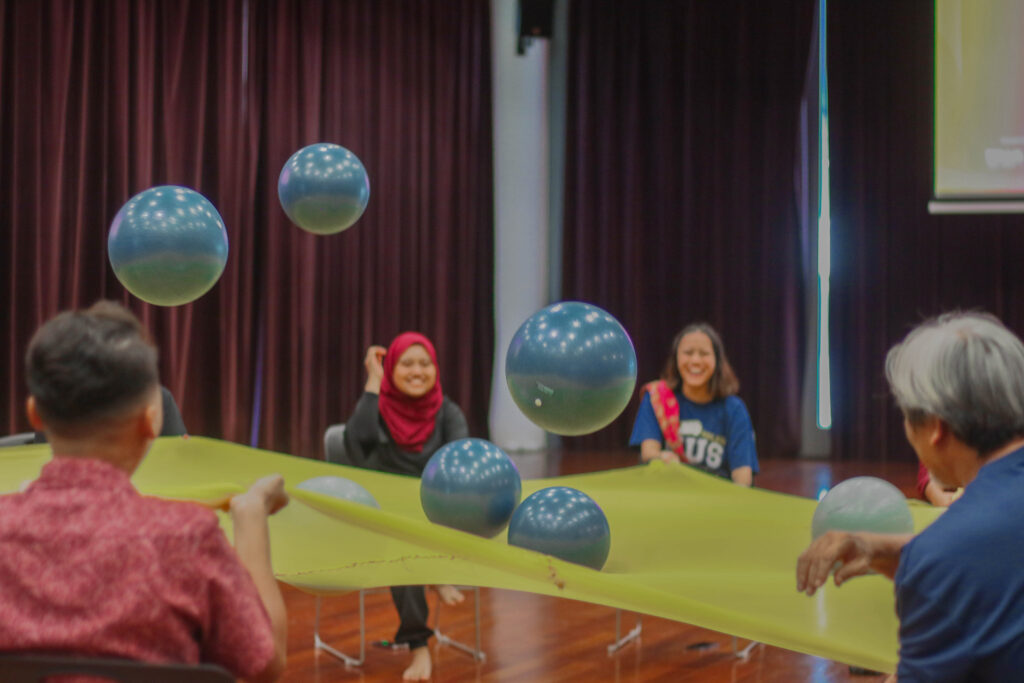
To allow time for participants to catch their breaths, Mr Edwin engaged them with a focus activity. At this point, it seemed that attention was the essence of the session as participants attempted to count the number of beats to the sequence that he played on the cajon. For most participants, this was even harder than they thought. Given the rigour and pace of the activities, this shifted the initial perception (or stereotype) that activities for seniors are easy to follow. In fact, Mr Edwin candidly shared that the seniors in his session could memorise the number of beats from more than 1 sequence, and then add these numbers together.
In exploring how elements of Malay dance and music could be employed in such activities, Mr Osman introduced the participants to the beats of typical Inang and Joget music. Mr Edwin observed that half-beats may be common in the Joget music, that may not be obvious should this be employed for a session with seniors. To that, Mr Osman deconstructed the Joget music to highlight its base form, slowly adding on to it to increase the difficulty level.
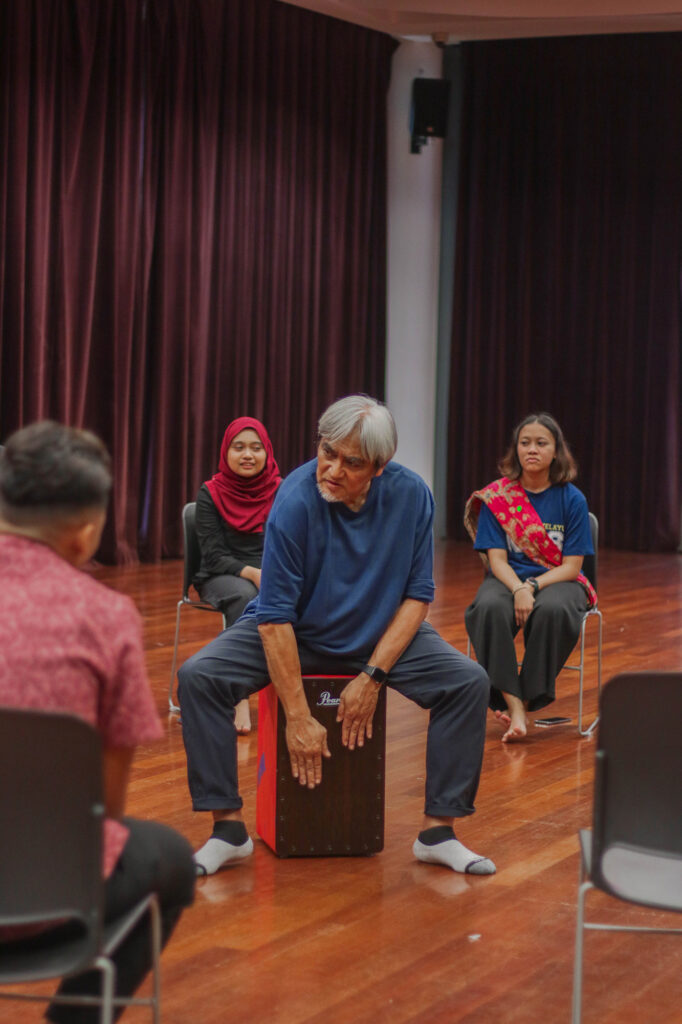
This active collaboration further extended into the dance-movement section, firstly led by Mr Edwin. At its core, these rhythmic movements are strategies to improve seniors’ physical and emotional wellbeing. He focuseed more on the intentions of such movements in engaging with different parts of one’s body, rather the aesthetics of dance. Employing similar viewpoints, Mr Osman then demonstrated a set of Zapin movements in its stripped form. Mr Osman would tell the participants to “row the boat”, “scoop the water to the side” and “scoop the water deeper and throw it to the back”. Through these guided movements, Mr Osman ensured that different parts of the body are engaged, such as twisting the upper bodies, stretching of the legs, and shoulder rotation.
The beauty in witnessing such collaborative processes is to tease out new observations. While both practitioners adopted imagery and intentional movements in their dance routines, their starting points were different. Mr Edwin observed that in his practice, imageries were created to aid seniors in following the routine, whereas in Malay dance, imageries are the basis of such movements.
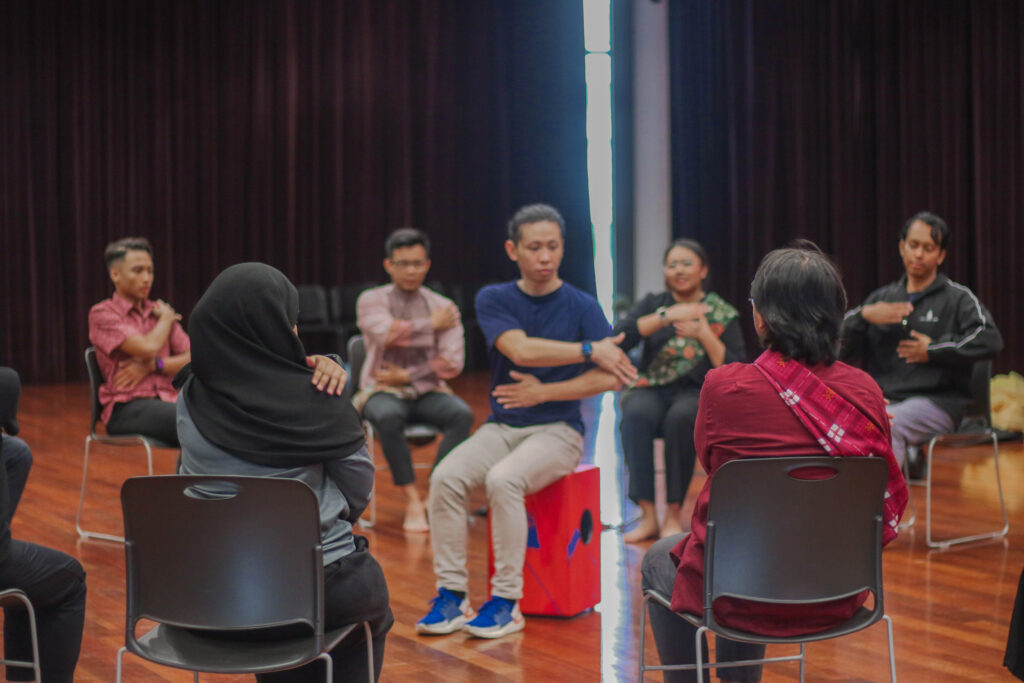
Mr Edwin demonstrating one of Decasilver’s dance routines to the participants.
Despite the difference in the approaches, they seemed to complement each other in catering to the different learning styles of the participants. By being exposed to the different approaches, individuals can move their bodies in a way that makes them feel the best – regardless of age. Interestingly, this session not only employed Malay dance vocabulary as part of a curated programme for seniors, but also allowed for participants to (re)learn Malay dance and music from its fundamental forms and history.
Movement Strategy Workshop #2
by Ms Hasyimah Harith (P7:1SMA Ltd) & Assoc. Prof. Liang Peilin (Probody Artmaking Lab)
The participants’ demographics were more varied for this session, with non-Malay dancers and non-dancers engaged in the workshop. Before the start of the workshop, participants were encouraged to pen down their expectations of the session and what they hoped to take away from this workshop. Quite a number of them were looking forward to learning dance movements, while others came in with an open mind to simply enjoy the process.
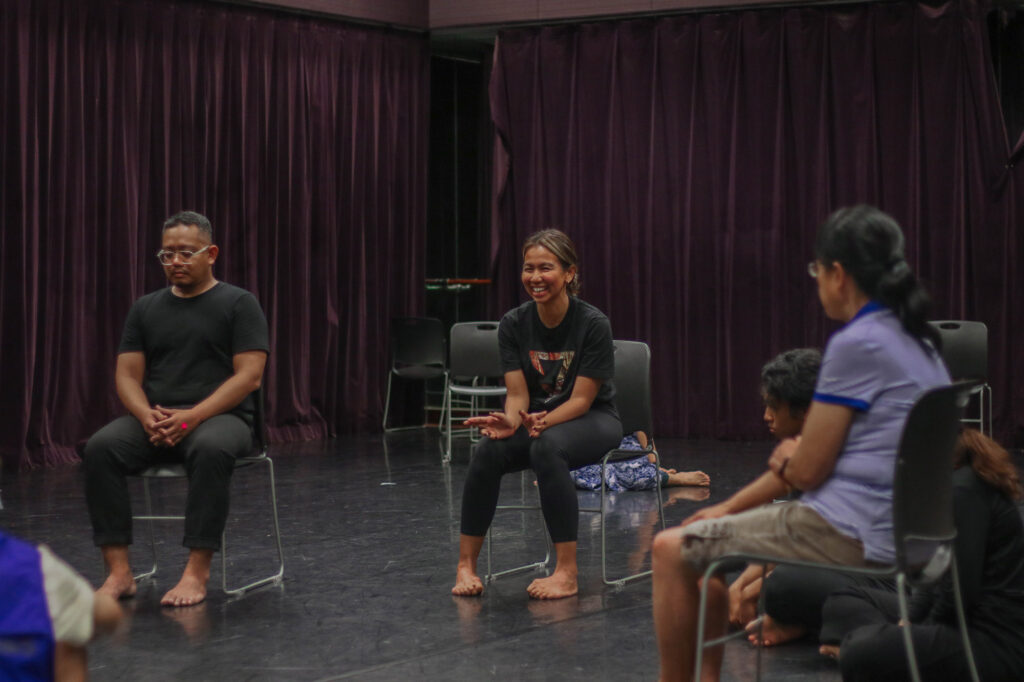
As compared to Workshop #1, there was a stark difference in the atmosphere as participants were briefed on safety gestures when the session became overwhelming for them. In fact, I had seen a participant walking out of the room in the middle of the session to get a breather. While the movements were less physically demanding, they required participants to be in touch with their emotions as they employed breathing techniques while moving their bodies sequentially.
The sequential moving of the body was emphasised throughout the workshop, which involved participants consciously thinking about the shifting weight distribution as they moved joint by joint. Given our fast pace of life, it is easy to overlook how we move our bodies which can lead to our bodies degenerating faster without proper care.
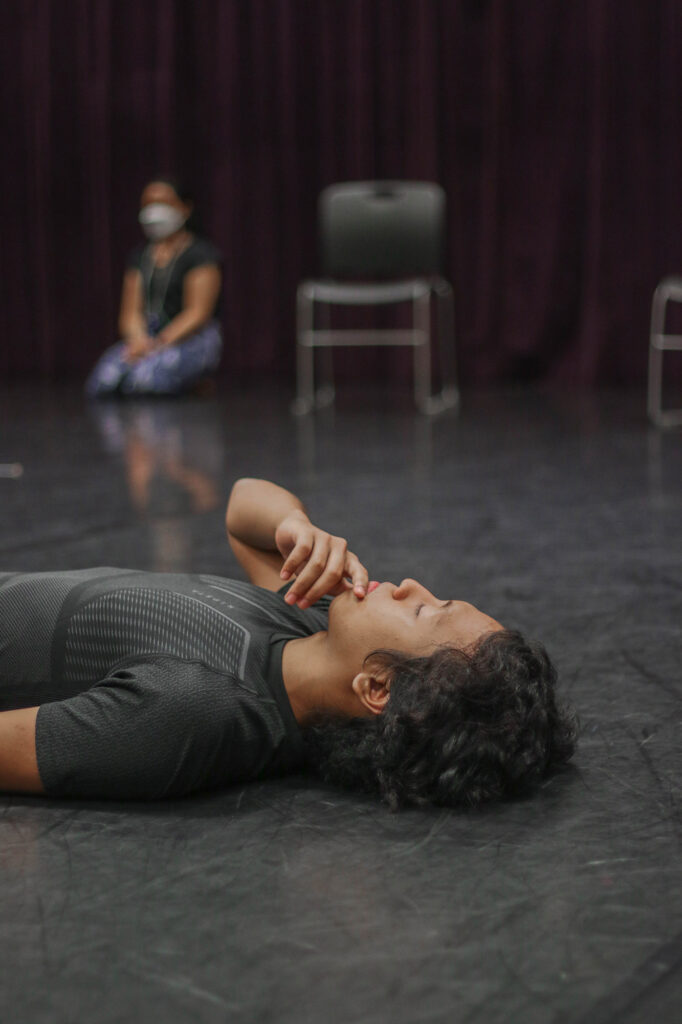
How then did participants move their bodies sequentially while incorporating Malay dance techniques? In the case of the Timang, participants were asked to feel the weight shifting from the heel to the ball of the feet. By getting them to move sequentially, they would inevitably slow down and reflect on how they feel about these movements. Some participants who are Malay dancers themselves found themselves doubting their techniques as they remarked how they would usually rely on their subconscious muscle memory to perform the movements like the keluk paku. The breathing techniques that were taught by Assoc. Prof. Liang added to the movement’s complexities, yet it is crucial to think about these things to prevent dancers from injuring themselves further.
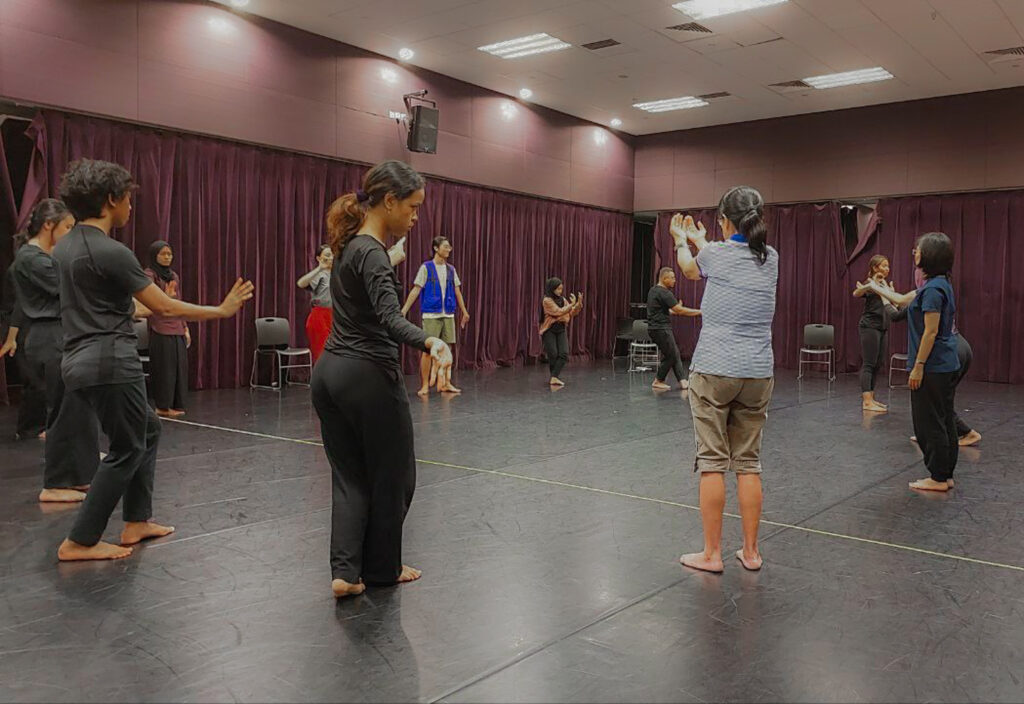
As the session highlighted the ageing body and how the human body will eventually lose its mobility, participants were also challenged to move their bodies while keeping in mind the restrictions of body parts that were instructed by Ms Hasyimah. Not only did this allow participants to reflect on an elderly’s body, they were also made to think about how physical disability influences an individual’s holistic well-being.
Other than connecting with themselves, participants were also paired to imitate and respond to each other’s movements as part of the session’s relationship aspect. Just as action speaks louder than words, this exchange allowed participants to connect with one another as they considered their respective positions within the exchange.
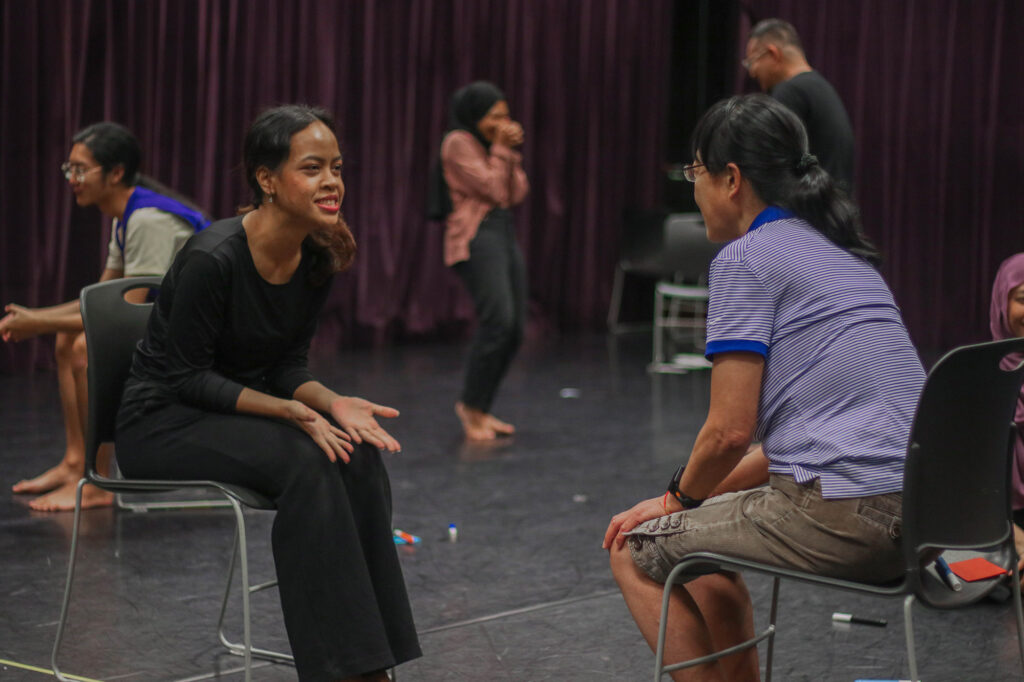
Similarities And Differences Between The Workshops
As illustrated in the descriptions above, the workshops differ in that the first one was energetic and participants were in high spirits. On the other hand, the atmosphere in the second one was serene and composed – although this is debatable given that participants could be battling with their inner turmoil as they became increasingly aware of their minds and bodies.
Interestingly, both workshops employed imagery in their movements. Imagination is boundless in the human mind, and tapping into this imagination would enable individuals to perform movements with more ease as they are no longer bounded by their physical limitations. As participants were encouraged to be mindful of the ageing body, participants had to be more intentional about the body parts and muscles they wanted to engage. Ultimately, the workshops offered movement strategies that built on the individuals’ body awareness.
Closing Thoughts
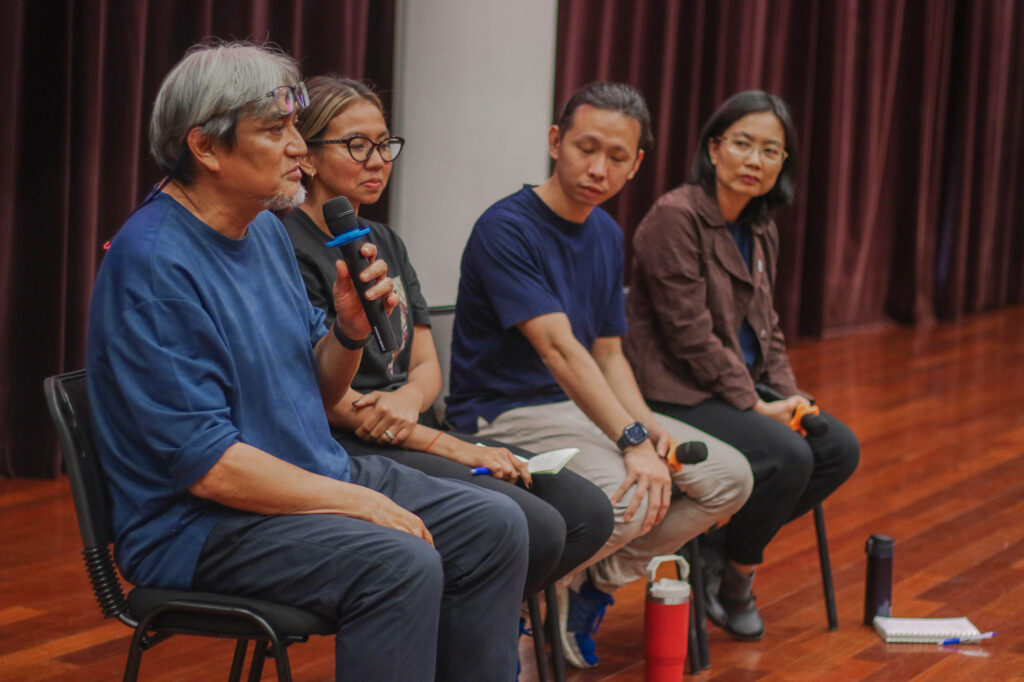
As practitioners from both workshops shared their observations, I found myself recalling Mr Patrick Piay and Ms Charmaine Tan’s words on the need for advocacies to drive evidence-based research before programmes can be implemented for the care industry, which was shared in the roundtable discussion. With the use of imagery and the intentional movements of body parts, Malay dance can be a potential therapy intervention. If we want to realise this potential, more needs to be done in advocating the use of Malay dance in community programmes and conducting empirical research on its effectiveness. By doing so, we can expand our resources for the community to tap on as Singapore shifts to community care for the society.

To learn more about ‘Kembali’ by P7:1SMA Ltd, please visit p71sma.com/kembali-process
Previous Article:
Therapeutic Arts – Healing Minds, Mending Bodies
